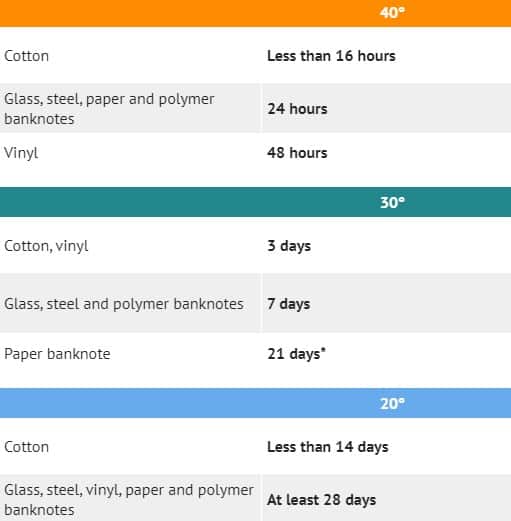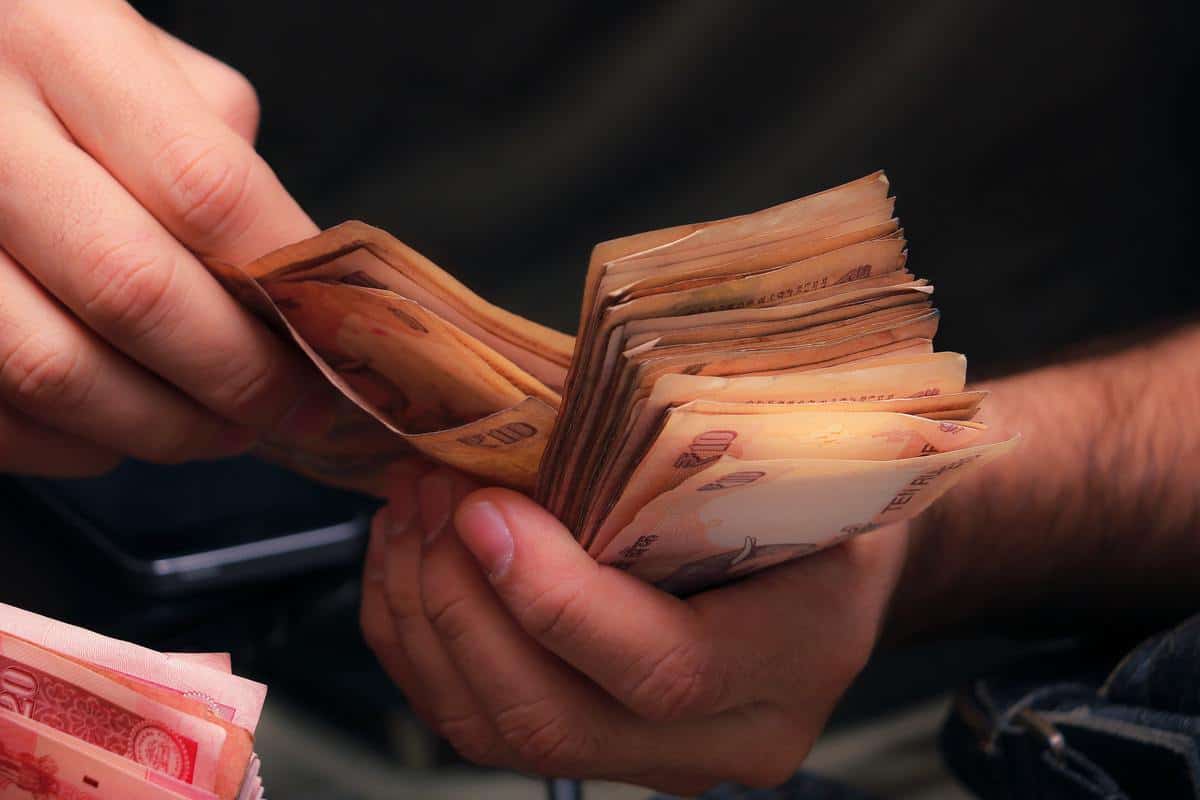COVID-19 may last up to 28 days on glass screens or banknotes found a study conducted by Australia’s top biosecurity laboratory recently. Initial studies found the virus only lived up to two weeks but new research from Australian scientists has concluded it can survive up to 28 days.
The study assumes significance as glass covers several commonly touched surfaces such as mobile phones, ATMs, airport check-in kiosks, etc. The study was conducted by researchers at the Australian Centre for Disease Preparedness (ACDP) and received funding from Australia’s defense department.
It involved drying the coronavirus in an artificial mucus on different surfaces—such as stainless steel, paper note, polymer note, glass, etc.—to analyze the survivability of the virus on those surfaces under specific conditions.
The virus was then re-isolated over a month later.
In comparison, the flu virus can survive 17 days on the currency at room temperature. The researchers said that this is “of particular significance, considering the frequency of circulation and the potential for transfer of viable virus both between individuals and geographic locations.”
Differs with temperature

The study, published in Virology Journal, finds that the virus may survive up to 28 days at room temperature (20°C) on glass, stainless steel, and paper/polymer banknotes.
At 40°C, the virus’s survival dropped to less than a day on some surfaces.
“While the precise role of surface transmission, the degree of surface contact and the amount of virus required for infection is yet to be determined, establishing how long this virus remains viable on surfaces is critical for developing risk mitigation strategies in high contact areas,” said Debbie Eagles, ACDP’s Deputy Director to Bloomberg.
The findings also indicate that the virus poses a greater risk in the winter compared to the summer. Similar experiments by Commonwealth Scientific and Industrial Research Organisation revealed the same.

